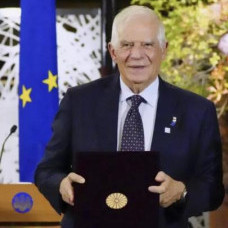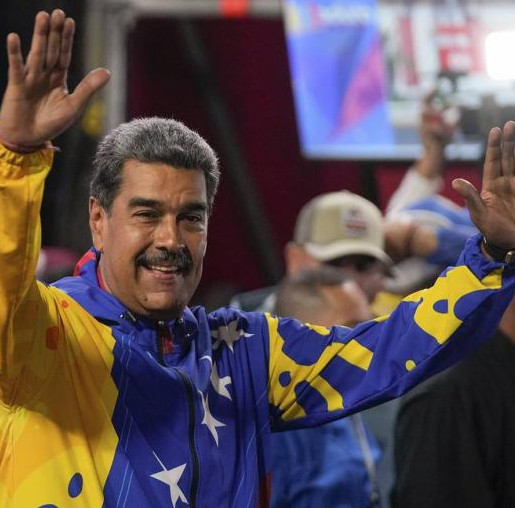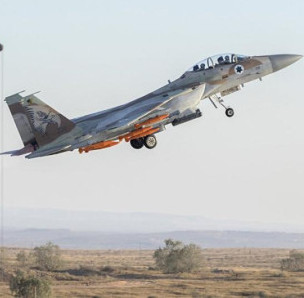Tomorrow, on November 9, on the territory of Latvia, Lithuania and Poland the NATO Steadfast Jazz military exercise involving more than 6,000 soldiers will have been completed. They are the largest NATO maneuvers near the Russian borders, since the end of the Cold War.
On 6 November in Latvia there was a demonstration part of the exercise, to which were invited representatives of foreign states and international journalists. Among the observers is a delegation of the General Staff of the Russian Armed Forces. According to its head, "the opportunity to see the elements of combat training of the alliance forces, ensuring interoperation between the contingents of various states is of course of interest."
In parallel with the Steadfast Jazz military exercise there were also Baltic Host 2013 military maneuvers under which it was tested how well the Baltic States can receive the NATO forces in case of military invasion or aggression.
According to Jazz legend, the supposed enemy will be in the territory of Sweden and Finland marked on the exercise map with fictitious names. Russia and Belarus are not marked in any way in the exercise scenario. However, the exercise assumes that they have seized the territory of Finland and Sweden, and now constitute a danger to the Baltic States and Poland, say Finnish experts. The commentary published in the Helsingin Sanomat newspaper suggests that NATO was afraid to irritate Russia, marking it as a virtual enemy at the exercise. "In any case, the echoes of the Cold War have once again sounded in Europe," said the newspaper commentary.
In May last year, at the NATO summit the so-called 'Chicago defensive package' was adopted consisting of two initiatives: 'smart defense' and 'joined forces'. The first involves the member countries cooperation in the development and purchasing of expensive sophisticated weaponry. The second is the maintenance of the NATO armed forces' military readiness even in the absence of major operations carried out by the Alliance. According to the NATO representative, "the focus is shifting from operations to readiness." He also recalled that the largest since the World War Afghan operation will have been completed in 2014.
America does not want and can not alone bear the burden of maintaining the world order. This circumstance dictates the agreement on establishing NATO Response Forces which will be in constant readiness. According to NATO Secretary General, the response forces formed of troops from different countries, will be provided with priority funding, they will constantly train and become a 'school of cooperation and at the same time an instrument of quick response."
The main outcome of this exercise should become the certification of the command and parts of 28 NATO countries participating in the maneuvers, as well as of the three partner countries - Finland, Sweden and Ukraine, which will be included in the 2014 rotation of the NATO Response Force.
Steadfast Jazz opens a new stage in the alliance's history - the resumption of large-scale field exercises. The NATO maneuvers scheduled for 2015 will surpass in scale this year's exercises. It is estimated that they will be held in the South-West of Europe - in Spain, Italy and Portugal.
The NATO Response Force has become the first combat formation to be under operational command of the alliance on continuing basis. Prior to their establishment in 2004, NATO did not have such a structure, but only command schemes.
Today, the NATO Response Force is composed of five major components – a ground brigade, consisting of three battle groups, an air and naval groups, a task force and a group of defense against weapons of mass destruction. Their total number is 13 thousand people. The NATO Response Force also includes on a rotational basis 28 units of the alliance forces with the rotation length of 12 months.
The 2014 exercise scenario involves a reflection by NATO's efforts of a large scale foreign invasion of the territory of Estonia, a relief for refugees, measures to combat weapons of mass destruction, anti-missile exercises, countering cyber attacks, as well as the organization of propaganda in period of hostilities.
On the Polish firing grounds the NATO air force and artillery reflected aggression of the imaginary enemy, meanwhile the Tallinn cyber defense center conducted a cyber operation. Its point was through the simulation of cracking of several Ukrainian and Latvian web-sites to show their owners the gaps in the protection system.
The events must have been carried out in an artificial information system, but due to an error instead of duplicates the real sites of major government organizations were cracked. It is significant that the operation was carried out in respect of a NATO non-member state that is actually was of offensive nature.
Some media wrote that the incident is connected with the recent activity of Ukrainian Anonymous. The hackers opposing any alliance with the EU, NATO and Russia, broke several Russian and Polish resources, attacked the website of the European Investment Bank and the website of the Ministry of Defence of Estonia.
In NATO, the Cooperative Cyber Defence Centre of Excellence established in Estonia in 2008 is engaged in countering cyber attacks. By the way, the initiative belongs to this Centre's experts to equate the cyber attack with an armed attack with all the consequences that come with it. According to Article 5 of the NATO Charter, in the event of aggression against a member of the Alliance it must take countermeasures. That is, in case of an external attack on any NATO member's network infrastructure, the Alliance shall neutralize the threat and then shall pass to the cyber offensive to the enemy: disables the troop command systems, blocks the public institutions, disconnects electricity, etc..
It is interesting that the completion of the Steadfast Jazz exercise will not be the end of the NATO forces training. The Polish task forces' command announced on 6 November that the task forces military personnel from 15 EU and NATO countries will participate at the largest maneuvers of this kind of troops. The exercise will involve about 2.5 million soldiers from Great Britain, Hungary, Lithuania, the Netherlands, Norway, Poland, Slovakia, the USA, Finland, France, Croatia, the Czech Republic and Estonia, as well as observers - representatives of Turkey and Sweden.
The practical part is scheduled for November 25-29. This phase of the exercise will be conducted at several firing grounds in Poland, as well as at military bases in Lithuania, Slovakia and the Czech Republic.
According to the exercise scenario, in a notional state of Central and Eastern Europe under the name of Free Valley (Freedonia) the situation on ethnic grounds is dramatically exacerbated. The government has recourse to the international community. The UN Security Council decides to send forces to the conflict area to stabilize the situation. They include land forces, naval and air units, as well as special operations forces. The command is taken over by the neighboring Free Vistuland valley (Poland plays the role of it at the exercise).
Following the results of these maneuvers Poland must receive a certificate showing the ability to plan and carry out special operations in the framework of the allied missions. Warsaw has been seeking to receive this status for seven years. In the future, it will allow the country on a par with the United States, Great Britain and France on a rotational basis to carry out duty to control special-forces raids held by the NATO Response Force.
The Center of the Old World (not far away from Vilnius there is a stele stating that it is here that the center of Europe is) lives under the constant expectation of a potential enemy attack. Lithuanian President Dalia Grybauskaite on 31 October told foreign journalists: "I've been informed that against Lithuania, against the Eastern Partnership and against me personally informational provocation will be conducted." Maybe that is why over the past ten years, the Lithuanian army has more than doubled.
Having lost the training ground in Afghanistan, the combined NATO forces will participate in increasingly large-scale maneuvers. This balances the NATO club's military expenditure owing to the economic crisis. The NATO exercise 2014 will involve 30 to 40 thousand military. That is my opinion that the scope of NATO exercises will increase with the departure from Afghanistan, are true.
The representative of the NATO exercise command said showing of respect to Moscow: "It is entirely possible that in the future we will be able to conduct exercises to train some forms of interaction between Russia and NATO military in order to repel a common threat."










